You think you know what food is out there just because you've walked a few laps around the grocery store throughout your life? Let me tell you. It's a big world out there. There are a lot of foods you are not familiar with. There are some that will downright shock you too.
Once you venture out in the world, you find that people tend to eat all kinds of stuff ranging from the entrails of animals to fermented eggs and wasp crackers. When's the last time you saw any of those in the grocery store aisles? Probably never. If you have, let me know where it's at. That sounds like an interesting grocery store.
In this article, we're going to dive into the delicacies of the world, and just maybe it might give you a perspective of how strange this planet is. So get ready to see the weirdest foods from around the world. #39 is not for the weak hearted and will totally freak you out!
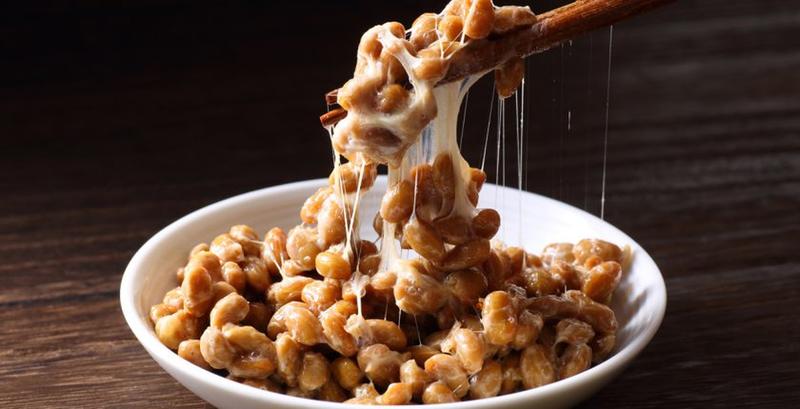
Tripe is in some ways similar to haggis because it is made from the stomach, which can be from various different animals. On the surface, it strongly resembles squid in taste but not in texture. Although many people have never tried eating animal stomach, tripe is eaten in many countries around the world and can be consumed in various dishes ranging from soups to sausages.

Being nutritious and cheap, it was mainly consumed by the working class people of Britain, but over the years as society became more affluent it was mainly used as food for pets. Nowadays its popularity in Britain has declined. In other parts of Europe, it remains popular in countries like France, Italy, Spain, and Portugal, where it can be bought in most supermarkets and grocery stores.
Yes, there is food that is actually named "Spam." Popular belief says that the name is an abbreviation of "spiced ham", "spare meat", or "shoulders of pork and ham." Basically, it is canned meat made from different animal parts and who knows what else. Spam got popular during WW2 because it was consumed by the soldiers that fought on the frontline. It is said to be the food of choice for those with meager earnings or a more adventurous spirit.

After the war, it became popular in countries across the world after it was introduced by the American army. It became so popular that even British Prime Minister Margaret Teacher referred to it as a "wartime delicacy." Nikita Khrushchev said, "Without Spam, we wouldn't have been able to feed our army." It might not have had the best taste but it sure had its use during the war years.
Have you ever wondered how a sheep's heart, liver, and lungs mixed with onions, oatmeal, and spices would taste like? You probably haven't. That mouthwatering concoction would be called haggis, which is a delicacy in Scotland. Just by mentioning the ingredients it would make most people faint (that is understandably so) but if you put all your prejudices aside it can be a thing that might be enjoyed by yourself, your friends and family.

If you find haggis delicious you can try and break the world record of eating haggis which is 3 lb (or 1.4 kg). On the other hand, if for some reason you don't find haggis appetizing you might be interested in a sport called haggis hurling which involves throwing a haggis as far as possible. The world record is 217 feet (66 meters). Whichever you choose, in both cases you are bound to have some fun.
This food may not be the food of choice for fans of chocolate pudding - anyway, black pudding is native to the British Isles but is consumed throughout the world. Its basic ingredient is congealed blood stuffed into sausage skin. It's usually served as part of an English breakfast and is low in carbohydrates and high in zinc and iron, in other words, it is the perfect hangover food.
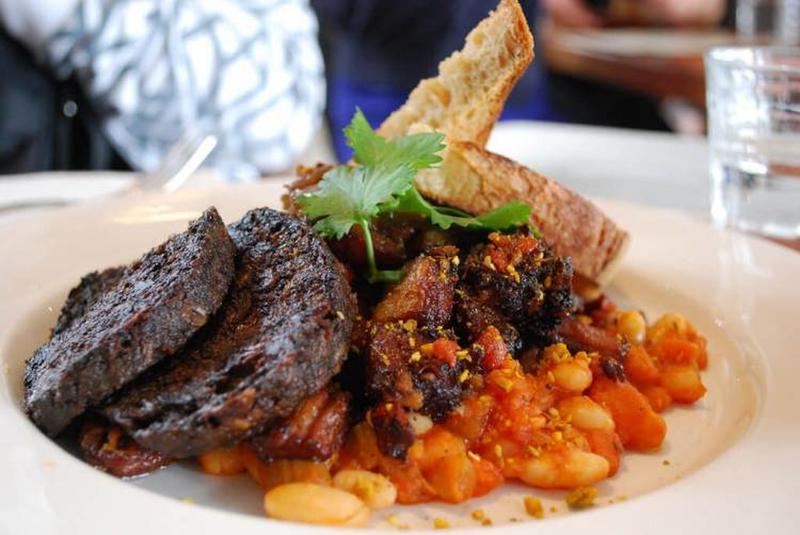
Its other uses are as a reward treat in canine training (such as the case in the military and police forces from around the world). Novel culinary uses for black pudding include black pudding ice cream (can't imagine what that looks like), while perhaps more conventional modern recipes include using it as an accompaniment to pigeon or scallops.
A stew made from cow's feet and head, in the past it was eaten during the winter when the choice of food was limited, now it is just a delicacy that can be savored throughout the whole year. It is quite disturbing to look at first, but might be worthwhile if you get over the initial reaction.
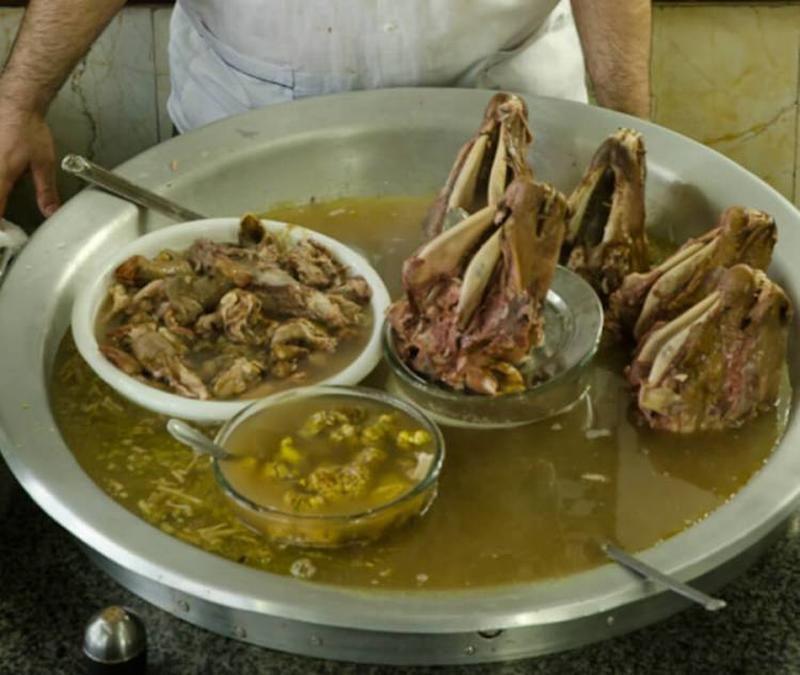
As a dish, it is quite widespread in the countries around the eastern Mediterranean, the Caucasus, the Near East and the Balkans. In some countries, it is a food which should preferably be eaten in the morning following a night of partying as it is famous for battling a hangover (probably because of its high-fat content). So keep in mind to make a khash dish the next time you go for a night of carousing.
It's surprising how many people across the world eat chicken's feet, a type of food that some people throw away because they think it is isn't edible or a tasty dish. The weirdness of it aside it might be worth a try considering how many people eat it across the world. Who knows, maybe it is the perfect snack to have with beer, judging by the picture it sure looks like that.

The feet are deep fried and if all the proper ingredients are used (sauces and spices) it can be a very tasty dish, the only drawback would be the bones which can get pretty annoying after awhile. Aside from chicken feet, duck feet can also be used. They are prepared with mustard and are served with vinegar, fresh green peppers, and crushed garlic. It is a very popular appetizer in China.
Speaking about disturbing stuff, those tuna eyes look haunting. Japan sure is the place to find unusual food, to say the least. If for some reason you ever wanted to taste tuna eyeballs it is the place to be. It's supposed to taste like squid and octopus. Tuna eyeballs are very popular there and can be found in the fish markets for a bargain price of 1$ a piece.
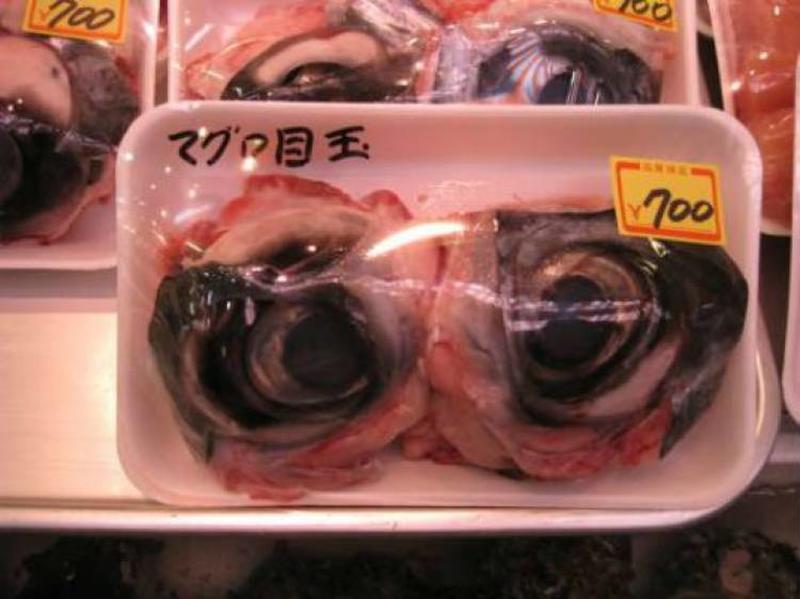
When you visit Japan next time and you're on a budget keep in mind that you can always turn to eating tuna eyeballs, maybe they will become your next favorite dish. Besides it is worth considering because of their high content of omega-3 fatty acids which are essential in every diet, that might even raise your IQ by a few points.
Hakarl is a type of national Icelandic dish made from fermented shark meat. It's characterized by its strong smell and not so appetizing taste. If you visit Iceland it is probably going to be offered to you by the locals, just so you know what you're in for. It has a reputation for challenging the taste buds of those who are the most open-minded food lovers.
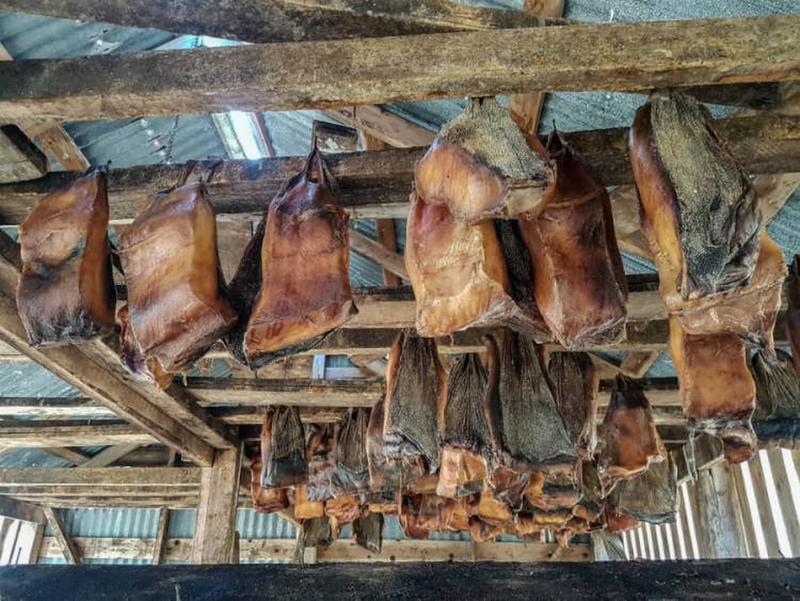
Because of its high ammonia content is has a strong smell similar to many cleaning products. It is often served as cubes on toothpicks. First timers are advised to pinch their nose in order not to gag, in Iceland it is most often served with a shot of the local alcohol. To attest for its taste even Chef Anthony Bourdain described hakarl as "the single worst, most disgusting and terrible tasting thing" he has ever eaten.
This is another one from those parts of the world. Those people are sure fond of their fermented fish. It is canned herring that supposedly has a strong pungent smell once you open the can, not a good recommendation to eat on the first date. Usually after opening the can people rush outside to eat it, in order not to cause other people to look at them with questioning gazes.

Surstromming is commonly served with snaps, light beers like pilsners or lagers, svagdricka (a type of light beer), water, or cold milk. What to drink with surstromming is disputed among connoisseurs (yes, there are people who call themselves that). Surstromming is usually served as the focus of a traditional festivity called a surstrommingsskiva. Whatever you think of Surstromming, it surely is an acquired taste.
Another fermented dish but this time it is an egg which is eaten in China. It has several names but whatever its name it sure looks odd. Characterized by a strong smell and taste it is meant to be consumed in small quantities. It certainly is a food for the bravest of men and women of course.

In Thai and Lao, the common word for century egg translates to "horse urine egg," due to the distinctive urine-like odor of the delicacy. However, there are misconceptions about using horse urine to ferment the eggs. There was a controversy in China where some people used heavy metals to speed up the process of fermentation, so beware if you sometimes want to enjoy this delicacy.
There is not much to be said about this dish except that it is a fermented head of a king salmon. It mght not be the best-tasting food on this list but it sure is a sight for sore eyes. Because the native people in Alaska don't throw away any part of the fish they even eat the head. For preparation, they just bury the fish in the ground or just leave it outside and wait for nature to do its course.
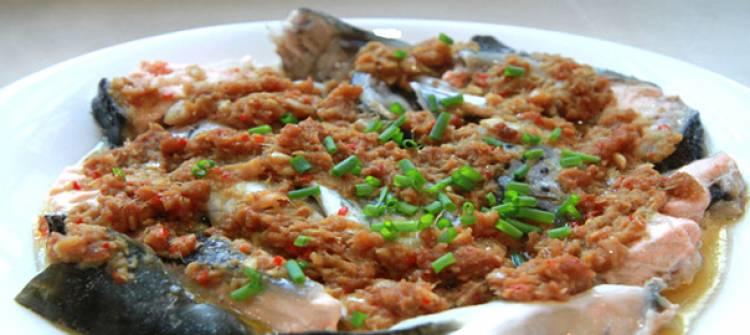
Afterward, the heads are collected and eaten. It basically is a rotten fish head left outside for a few weeks and eaten. The notoriety of this food is widespread, it even attracted the attention of Food Network's "Bizarre Foods" show. It is of much concern to Alaskan healthcare professionals because it can be the cause of food poisoning.
Another delicacy from Japan this time, is a type of fermented and raw food product. It is not for those faint of heart. The flavor is similar in saltiness and "fishiness" to that of European cured anchovies, but with a different texture. Some consider it to be an acquired taste even for the native Japanese palate. Could be a good choice after a night of drinking - it sure will sober you up or make you empty your stomach.
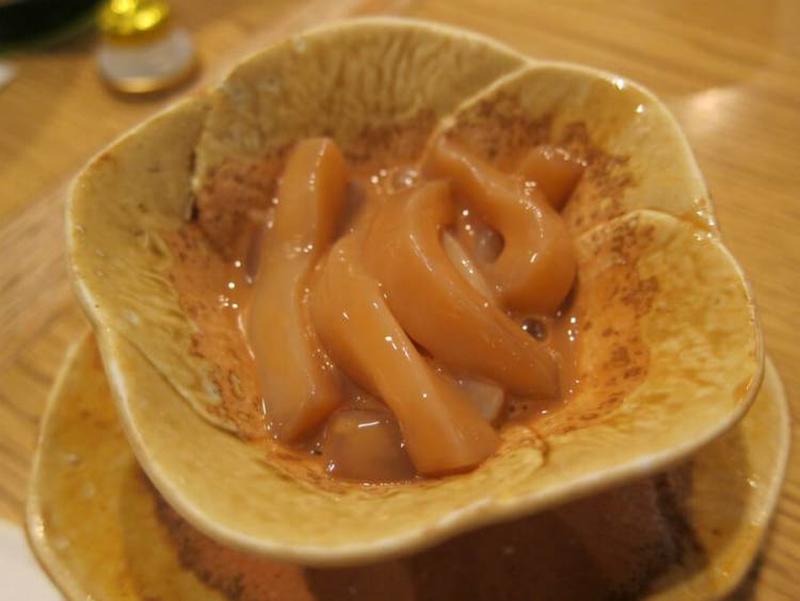
The best way to consume it is with one gulp at a time followed by a glass of straight whiskey. There are some bars in Japan that specialize in shiokara. Bear in mind that because of its strong taste it is always served in small portions, furthermore Japanese people will always tell you that it's a healthy dish. Who knows, maybe they're in the right on this one.
It is a delicacy in Thailand and they consider it to be a snack food. Jing Leed is a cricket which is usually fried and seasoned with Thai sauces and spices. They are 1.25" - 1.5" long and eaten fried. The grasshoppers look like a good snack, just put ketchup on it and you're good to go. Beware, once you bite into it, a type of juice squirts from the cricket. It is also an excellent source of protein if you're into bodybuilding.
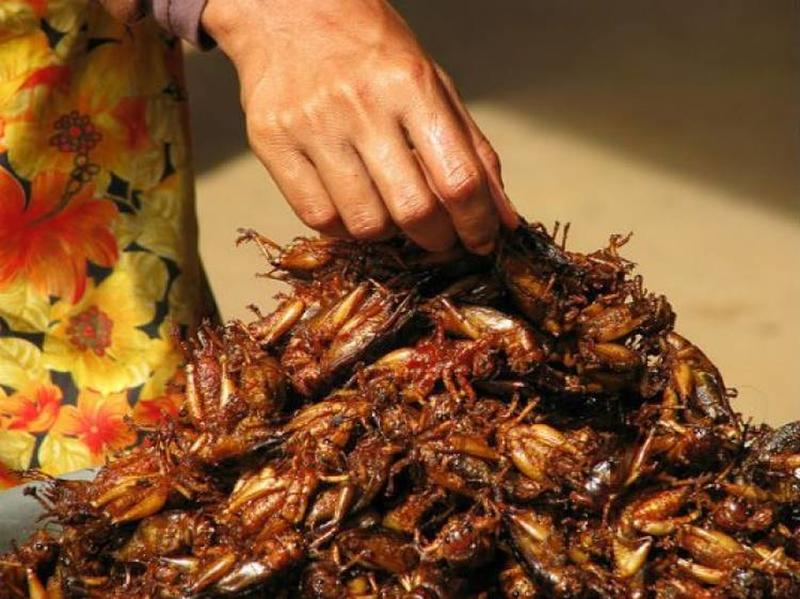
It is one of the street foods which can be bought in the streets of Thailand. So for whatever reason you're in Thailand and want to try the local delicacies, Jing Leed is the food you are looking for. A spicy and crispy delight that will remind you of the exotic parts of the world.
This is a cracker that every cracker fan should try out at least once in their life. You can get an idea what type of food this is, solely by the name - after all, it is called "wasp crackers." It is consumed like any other cracker with a cup of warm milk (or maybe with a smoothie) and it makes for the perfect breakfast. It is a good alternative if you're tired from the good old chocolate chip cracker.
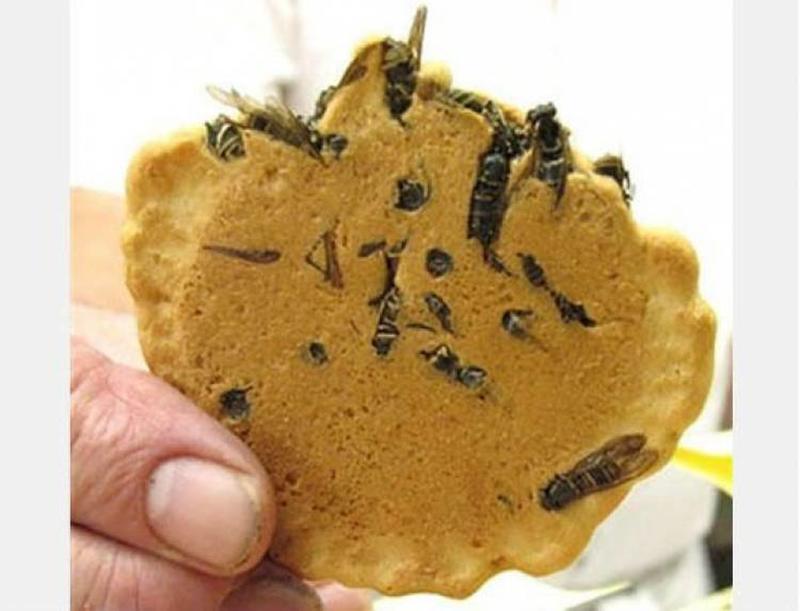
It is supposed to be very popular in Japan and if you can get over the fact that there are wasps in it, it shouldn't taste much different from a regular cracker. And as in other foods with an insect in them, it probably has some health benefits, things like curing cancer and such, and it has a lot of protein.
Not surprising for this part of the world, as insects really are a delicacy. The fried spider is a regional delicacy in Cambodia. In the Cambodian town of Skuon, the vending of fried spiders as a specialty snack is a popular attraction for tourists passing through the town. Apparently, it has more meat than grasshoppers but that meatiness comes with a price. The inside consists of brown sludge in the abdomen, which consists of innards, eggs, and excrement.
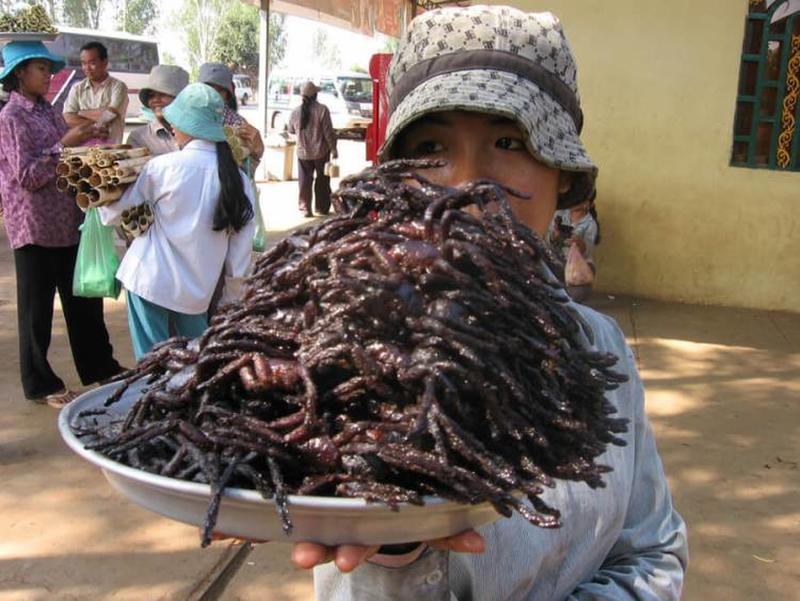
The spider is a tarantula which is the size of a human palm. It costs 0.$08 USD, which is a bargain price. Even if you never wanted to try fried spiders its worth a try, it will save you money as well. In the recipe, the spiders are tossed in a mixture of MSG, sugar, and salt; the crushed garlic is fried in oil until fragrant, and then the spiders are added and fried alongside the garlic until "the legs are almost completely stiff, by which time the contents of the abdomen are not so runny."
When talking about unappetizing foods witchetty grub comes to mind. Part of the Australian "bushmeat" type of food, this was a staple of the indigenous Australians in the desert. This can either be eaten raw when it tastes like almonds or lightly cooked, where its skin crisps like roasted chicken and its insides take on the look and consistency of a scrambled egg. Apparently, it tastes much better than it looks. The witchetty grub is valued for its protein content and nutrition.
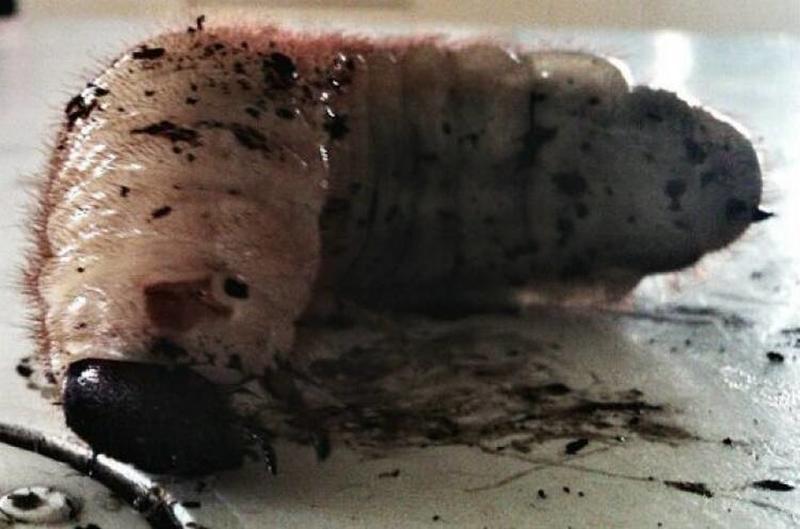
When held, as a defense mechanism, the grubs will secrete a brown liquid. These grubs live about 60 centimeters (24 in) below ground and feed upon the roots of river red gum. They can also be found under black wattle trees, and are attributed as the reason why the wattles die within 10 to 15 years which is a damn long time for a grub to live. It's almost as long as a dog or cat for that matter.
This dish is made of the edible larvae and pupae of ants, harvested from the tequila or mescal plant. Considered something of a delicacy, it is said to have the consistency of cottage cheese and a buttery, nutty taste. Looking from the outside it doesn't look that bad, it's more like a rice dish or something like that. Furthermore, escamol does not come cheap and the reason behind the high price of escamoles is that they're only available between February and May each year, and are a prized Easter celebration food in some areas.

Traditionally cooked with onion and chili and are often pan-fried with butter and spices, escamoles can be found in tacos and omelets or served alone, accompanied by guacamole and tortillas. The dish is also known as "Mexican caviar", or "insect caviar." For all you caviar lovers out there if you want something other than the regular caviar you might be tempted by this delicacy. Often pan-fried with butter and spices, escamoles can be found in tacos and omelets or served alone, accompanied by guacamole and tortillas.
Beondegi is another one of those tasty insect dishes. It is a popular dish in South Korea sold by street vendors. It is made from silkworm pupae and is prepared by boiling or steaming it and adding seasonings. It is supposed to taste like wood so if you wondered what wood tastes like just try Beondegi. It can also be found in grocery stores and convenience stores. Korean people must really love Beondegi.
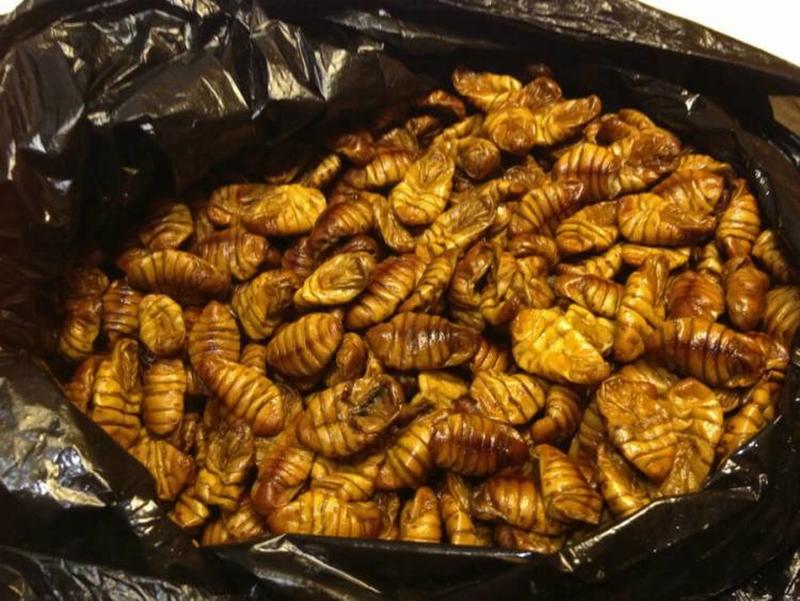
Like many other similar dishes, it rose to prominence in times when there was a need for cheap and nutritious food. It is widespread in Korea and is served in restaurants as a side dish. Despite its unusual appearance, it might appeal to some people who are adventurous and want to try the local delicacies and the taste of wood. Who are we to judge, right?
Escargot, meaning "edible snail." The snails are cooked in a sauce of white wine, garlic, butter, and parsley served in their shells. It is said to have a similar consistency to mussels or clams, though some find them to be pretty rubbery. Perhaps best to try in a decent, reasonably priced restaurant rather than the street version from a street food vendor in Hong Kong.
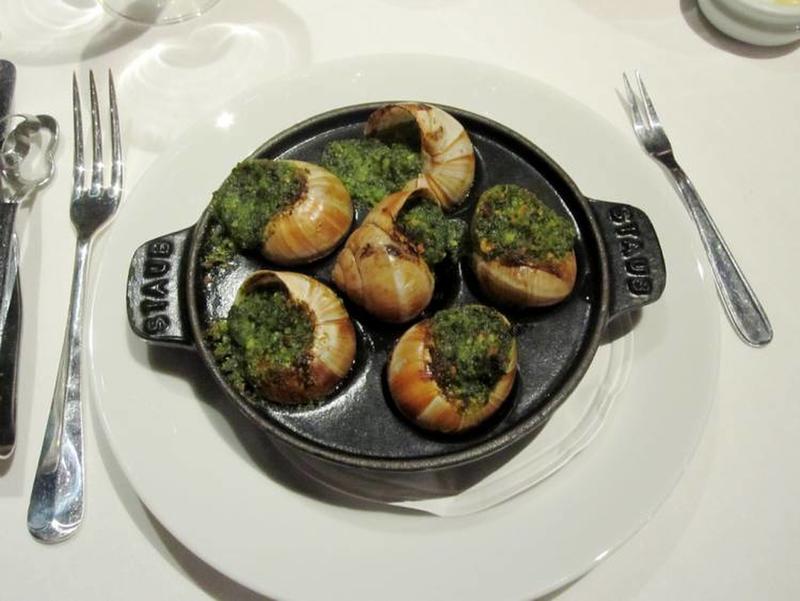
The snails are first prepared by purging them of the likely undesirable contents of their digestive system. The process used to accomplish this varies, but generally involves a combination of fasting and purging or simply feeding them on a wholesome basis. The methods most often used can take several days. On the nutritious side like most mollusks, escargots are high in protein and low in fat content (if cooked without butter). Escargots are estimated to contain 15% protein, 2.4% fat, and about 80% water.
Edible sago grubs are said to be creamy tasting when raw or meaty and like bacon when cooked. Looks like it can be served with eggs because of its bacon-like flavor, it's worth the try. It is generally seasoned and flavored in the same way as the other Southeast Asian creepy crawly favorite, Jing Leed and can served alongside.
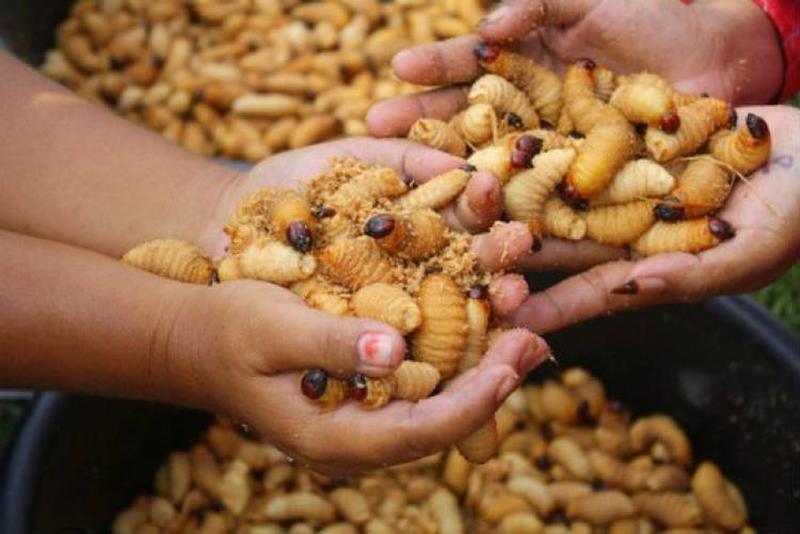
Sago Grubs can be eaten raw, steamed wrapped in sago palm leaves or roasted. They taste a bit like snail and oysters combined with a bland vegetable taste. Much of the taste actually comes from the cooking method - they can taste meatier if fried in oil or bacon fat. They can also be smoked or fried. To roast them, just make a kabob from them on a skewer and hold them over the fire.
Here is one type of food you couldn't imagine even in your wildest dreams, yet here it is, in the flesh. Used to flavor stews or eaten on their own, stinkbugs are said to have a crunch to them and taste a little like apple. Prepared by boiling, the bugs release defensive pheromones in a last-ditch attempt to survive, and while it hurts the eyes, the pheromones are no more successful than the onion's weak survival attempt.
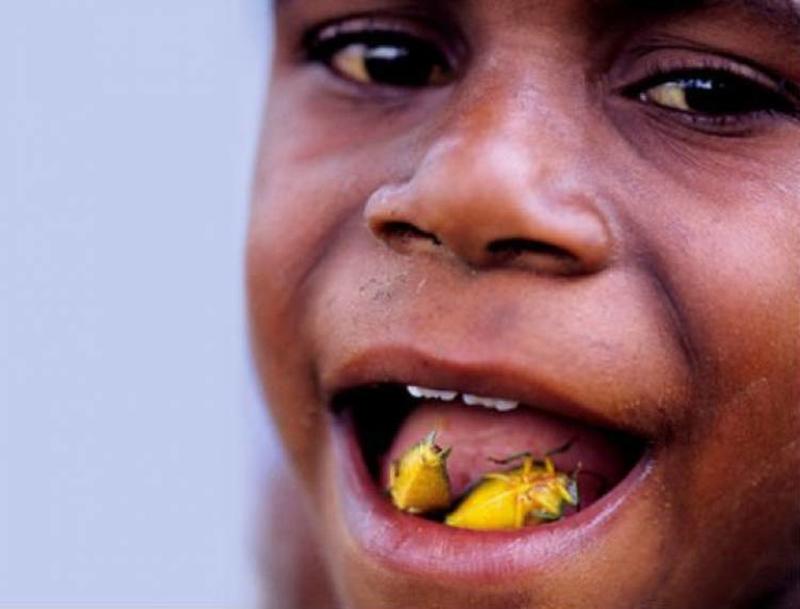
Chemical analyses of ground, freeze-dried stinkbugs revealed that the insects have lots of protein and nine essential amino acids. The stinkbugs also contain cholesterol-lowering fatty acids and several antioxidants that come from a flowering plant that the bugs eat. Stink bugs might not look good or even smell good but they sure have some nutritional value to compensate for those drawbacks.
A big fat, juicy worm that's said to be full of meat. Although traditionally dried or smoked, they are usually rehydrated and cooked with tomato or chili sauce for flavor. According to an American couple who tried the dish on the Food Network, it tastes like barbecued chicken with honey. It's not such a bad taste when you consider that you're eating worms, it might be well worth a try.
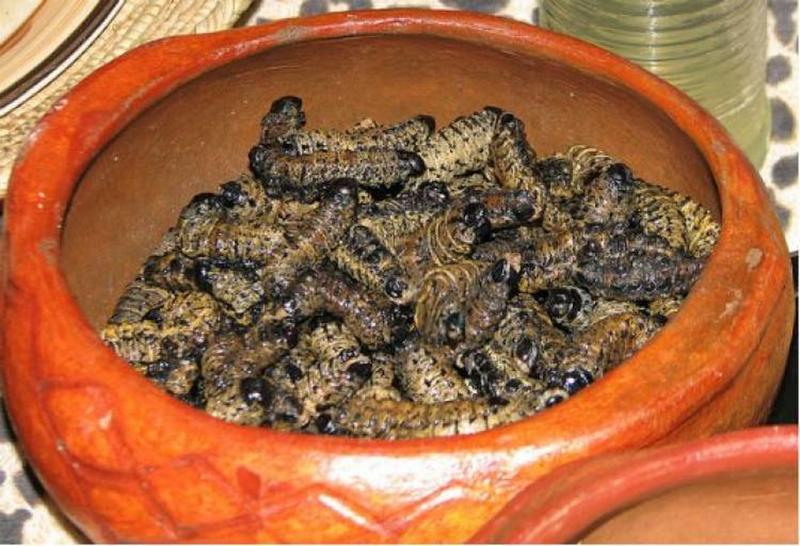
Mopane worms are hand-picked in the wild, often by women and children. In the bush, the caterpillars are not considered to belong to the landowner, but around a house, permission should be sought from the resident. Chavanduka describes women in Zimbabwe tying a piece of bark from particular trees in order to establish ownership. When the caterpillar has been picked, it is pinched at the tail. The picker then squeezes it like a tube of toothpaste and whips it to expel the slimy, green contents of its gut.
Not actually found in tequila but rather in it's cheaper cousin, mescal, it's said that the legendary hallucinogenic properties of the worm are pretty much non-existent. They say it's all a marketing gimmick. There is another use for it though if you eat the worm at a party you will earn the admiration of all your friends! Other than that nothing else happens. But if you eat the worm you probably drank the whole bottle to get it, and that has its own host of side effects.
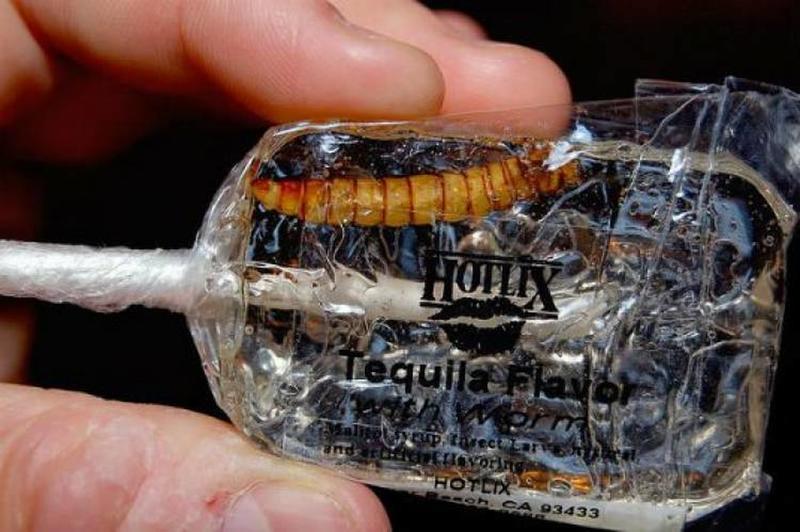
Besides this, there is superstition surrounding this worm, as some people believe that it brings good fortune and strength to the lucky person who finds it in his or her glass. Be that as it may, worm or not, it is still great to celebrate with an agave-based spirit, so just gather your friends and start drinking copious amounts of it and then you can search for the tequila worm.
Made from yeast extract, a by-product of brewing beer, Marmite (or Vegemite as it's known in Australia) is essentially the slurry from the bottom of the barrel that most breweries just throw away. It's a sticky brown paste with a concentrated, salty flavor that's usually spread on toast or eaten with cheese. It's just one of those foods that someone loves or hates to eat.

The product that was to become Marmite was invented in the late 19th century when German scientist Justus von Liebig discovered that brewer's yeast could be concentrated, bottled and eaten. In 1902 the Marmite Food Extract Company was formed in Burton upon Trent, Staffordshire, England, with Marmite as its main product and Burton as the site of the first factory. Concerning its nutritional content, it is rich in B vitamins, iron and protein.
Just as the name implies, a pickled egg is a hardboiled egg that's been left to go cold, after which it has been stuck in a jar of vinegar. Of all the foods listed in today's article, the pickled egg is one of the few that doesn't instantly gross out most people, which is always a bonus. The added vinegar might even make this easy to do dish interesting to some people.

The taste of the pickled egg has been described as sour, although pleasant enough to penetrate you right in the heart. The yolk is slightly powdery in texture, which is understandable, considering the acidic environment the egg has to stay in - sometimes even for days and week before it is eaten. This is a recipe that you should definitely try.
Now moving on to more "normal foods," this Asian delicacy is made from the nest of the swiftlet bird, who instead of collecting twigs for its bed, builds it out of its own gummy saliva, which goes hard when exposed to air. Usually, they build it high up on cliff faces, which means that harvesting them is a dangerous business from which many people die each year. Whether its "rubbery taste" is worth this human sacrifice, it is up to you to find out.
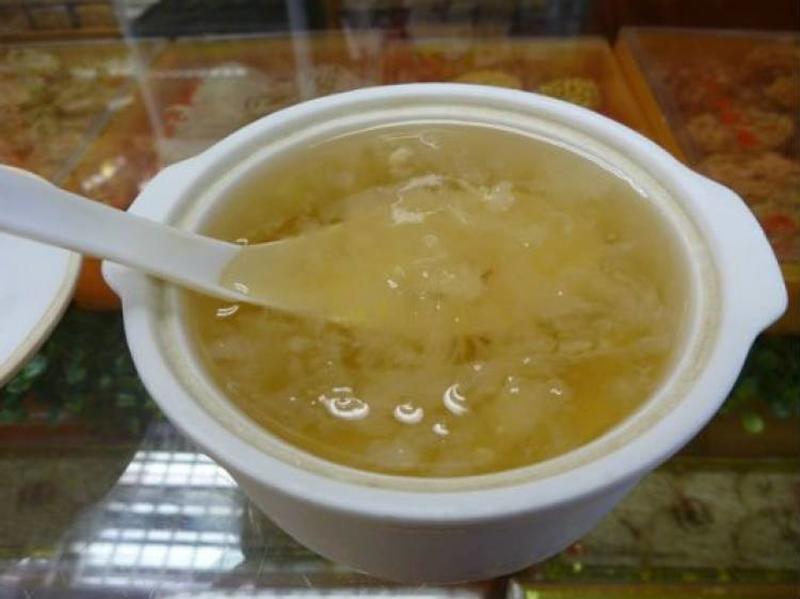
In addition to their use in soup, edible bird's nests can be used as an ingredient in many other dishes. They can be cooked with rice to produce bird's nest congee or bird's nest boiled rice, or they can be added to egg tarts and other desserts. A bird's nest jelly can be made by placing the bird's nest in a ceramic container with minimal water and sugar (or salt) and double steamed. Ready-to-eat bird's nest jelly is available in jars as a commercial product.
Made famous by The Simpsons, fugu can be lethally poisonous due to its tetrodotoxin; therefore, it must be carefully prepared to remove toxic parts and to avoid contaminating the meat. The restaurant preparation of fugu is strictly controlled by law in Japan and several other countries, and only chefs who have qualified after three or more years of rigorous training are allowed to prepare the fish. Still, it's said to make one mean little sashimi dish.
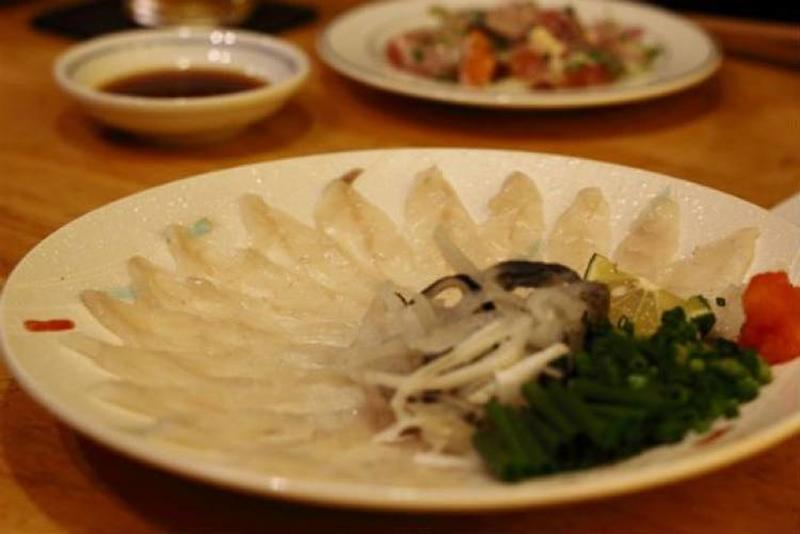
Fugu contains lethal amounts of the poison tetrodotoxin in its inner organs, especially the liver, the ovaries, eyes, and skin. The poison, a sodium channel blocker, paralyzes the muscles while the victim stays fully conscious; the poisoned victim is unable to breathe, and eventually dies from asphyxiation. There is no known antidote for fugu poison. The standard treatment is to support the respiratory and circulatory systems until the poison is metabolized and excreted by the victim's body.
Did you know that French waiters will still ask foreigners over and over again if they know what they are getting themselves into, if someone tries to order the Steak Tartare dish?. It's made up of good quality raw ground beef, served with onions, capers, raw egg and seasoned with Worcester sauce and other condiments (usually with rye bread or fries on the side). Maybe it's worth a try for those of you who are unabashed meat eaters and like to try raw meat.
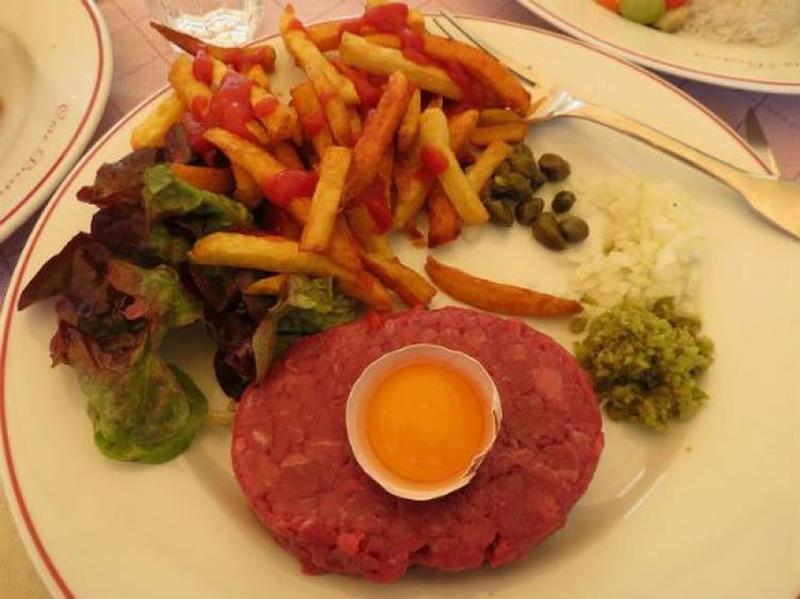
Health concerns have reduced the popularity of this meat dish in some parts of the world because of the danger of contamination by bacteria and parasites. When basic hygienic rules are followed and fresh meat is used, the risk of bacterial infection is low. Even when these provisions are met, it is nonetheless not recommended for people who have a weakened immune system or suffer from a chronic illness, as these individuals are at a greater risk of infection from E. coli and/or Salmonella.
Interesting one to bring up after that whole European horsemeat scandal. While most people have an aversion to horsemeat, it can be understood where that reluctance to try horse meat comes from comes from. At one time horses were our companions and transport. Now they are the playthings of rich people. Perhaps this is something of a nostalgic attachment? Anyway, cherry blossom meat is made from raw horse, served either on its own or as part of sushi. It's said to be low in calories and low in fat, despite that it definitely is not for everyone's plate.
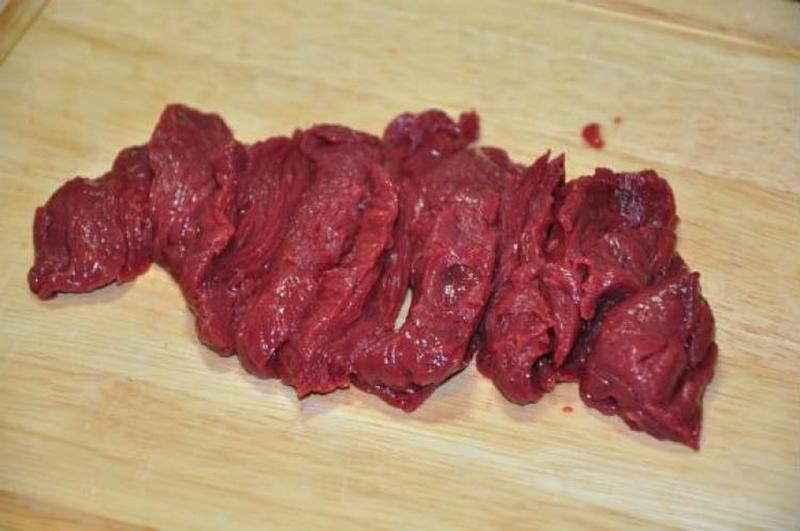
In many cultures across the world and especially in Asia, it is common to see horses in everyday consumption. In other countries, it is considered as a taboo (except in France). Furthermore, horse farms are common in Japan. Horse beef is high in iron, b-vitamins and lean protein. Horse meat has been traditionally consumed in Central Asia, Japan and France. In some areas of China, it is consumed, but mostly it is frowned upon.
Although some people might find them strange, frog legs are more commonly eaten than you think and might be some of the most appetizing foods on this list. People who tried them say that they have a texture and taste similar to chicken. Frog legs are most prominent in the French and Chinese cosine but are also consumed in other parts of the world in countries like Italy, Greece, Spain, Portugal, Thailand, Vietnam, Indonesia and others.
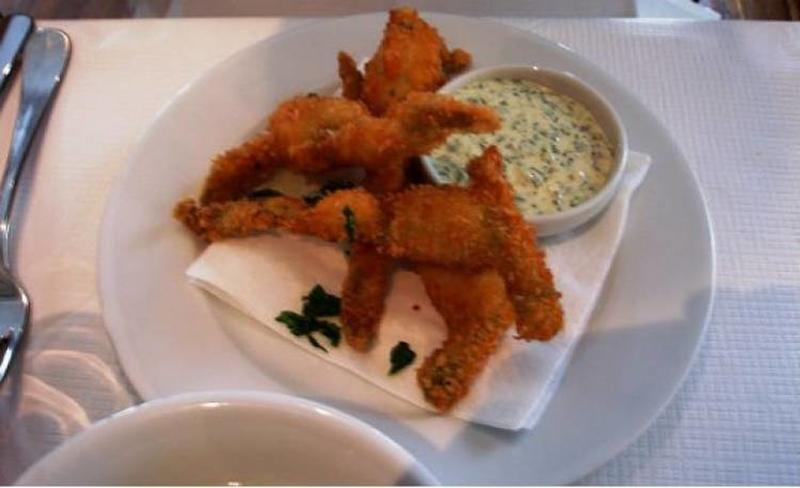
Frog legs are rich in protein, omega-3 fatty acids, vitamin A, and potassium. The taste and texture of frog meat is approximately between that of chicken and fish. Frogs are raised commercially in certain countries - for example, Vietnam. Frog muscles do not resolve to rigor mortis as quickly as muscles from warm-blooded animals (like chicken, for example) do, so heat from cooking can cause fresh frog legs to twitch. Frog legs can be prepared in different ways depending on the way they are prepared in different countries.
Bet you didn't expect this one. Historically the staple meat of indigenous Australians, kangaroo is high in protein and low in fat, making it a pretty healthy choice. It's gamey in flavor and served in multiple ways, from a simple steak to sausages and burgers. Although some animal groups are against the hunting and harvesting of kangaroos for meat, many ecologists see farming native animals as much better for the fragile Australian rangelands than cattle and say it could massively reduce greenhouse emissions.
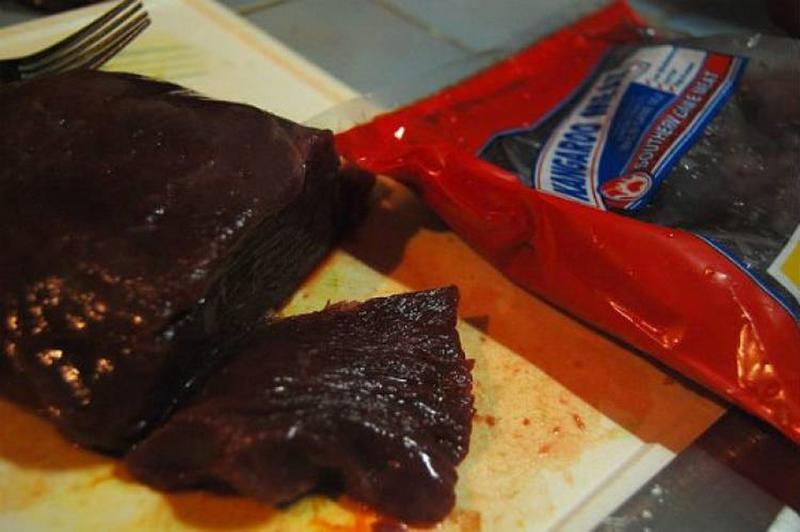
Kangaroo meat was legalized for human consumption in South Australia in 1980, and in all other Australian states in 1993. Kangaroo was once limited in availability, although consumption in Australia is becoming more widespread. However, only 14.5% of Australians were reported in 2008 as eating kangaroo meat at least four times per year. Many Australian supermarkets now stock various cuts of kangaroo including fillets, steaks, minced meat and 'Kanga Bangas' (kangaroo sausages). Many Australian restaurants serve kangaroo meat.
A predator whose meat might not be as bad as it would seem at first glance. Crocodiles are not only harvested for shoes (one for all you Jimmy Nail fans out there), crocodile meat is considered a delicacy in many places around the world, supposedly tasting like a cross between chicken and crab. Although crocodiles are protected in many parts of the world, crocodile meat is usually farmed, so it's sustainable because crocodiles aren't at risk for extinction.

Various methods of preparation and cooking exist, including tenderization, marination, deep frying, stewing, roasting, smoking, and sauteeing. Crocodile meat is used in dishes such as gumbo and is used in traditional Louisiana Creole cuisine. Sausages are also prepared using the meat.
Cuts from the animal used include meat from the animal's tail and backbone, which have been described as "the choicest cuts."
Another predator that tastes like chicken. A favorite in the Southwestern United States, it's said to taste a little like frog legs. Experts advise boiling the meat off the bones before dipping in egg and covering in seasoned salt mix, flour, and breadcrumbs. Deep fat fry and munch away. To be honest, judging by the picture it does look very appealing, it might go well with fries and a stone cold beer.
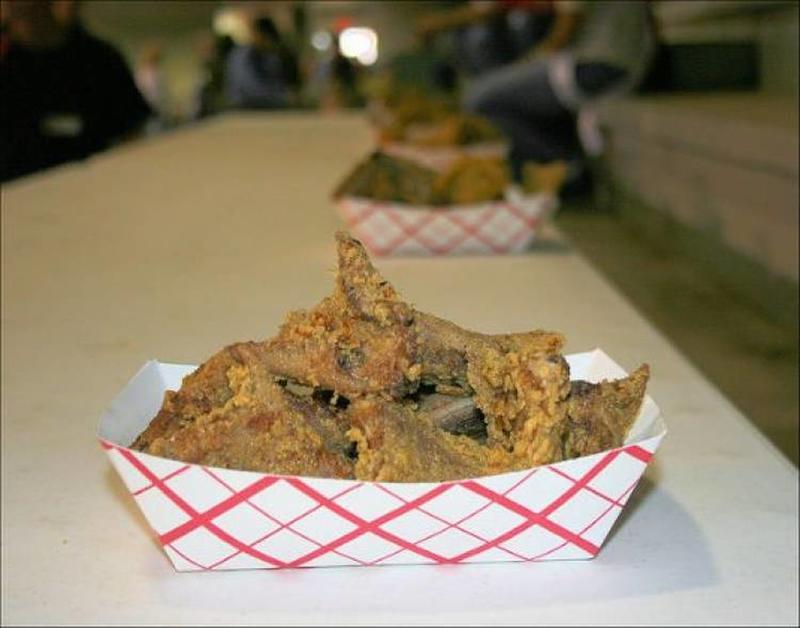
The journalist Alistair Cooke claimed that rattlesnake tastes "just like chicken, only tougher." Others have compared the flavor to a wide range of other meats, including veal, frog, tortoise, quail, fish, rabbit, and even canned tuna.[Methods of preparation include barbecuing and frying. It seems that different people attribute different tastes to the rattelesnak, so it's up to you to try and decide how a rattlesnake really tastes like.
Some people consider them their favorite pets while others their favorite delicacy. Traditionally, the animal was reserved for ceremonial meals by the indigenous people in the Andean highlands, but since the 1960s, it has become more socially acceptable for consumption by all people. It continues to be a major part of the diet in Peru and Bolivia, particularly in the Andes Mountains highlands; it is also eaten in some areas of Ecuador (mainly in the Sierra) and Colombia.

Because guinea pigs require much less room than traditional livestock and reproduce extremely quickly, they are a more profitable source of food and income than many traditional stock animals, such as pigs and cattle; moreover, they can be raised in an urban environment. Both rural and urban families raise guinea pigs for supplementary income, and the animals are commonly bought and sold at local markets and large-scale municipal fairs. Guinea pig meat is high in protein and low in fat and cholesterol and is described as being similar to rabbit and the dark meat in chickens.
Turtle soup is soup or stews made from the flesh of a turtle. The dish exists in some cultures and is viewed as a luxury or delicacy. The soft-shelled turtle was commonly used for turtle soup in Singapore while the snapping turtle, found mainly in the United States, was typically used for different dishes; and is still found in certain regional cuisines, particularly in the Philadelphia cuisine and some Southern United States cuisines. Chinese and other East Asian cuisines use primarily soft-shelled turtles for their turtle soup.
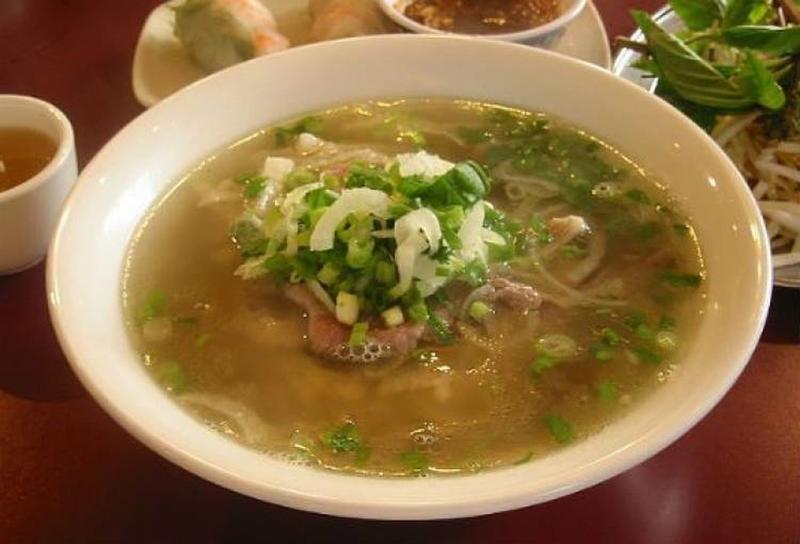
In some jurisdictions in the US, the consumption of turtles is illegal due to its status as an endangered species. Generally speaking, turtle populations cannot quickly recover from the loss of a breeding adult; thus, killing these turtles to make soup can depress populations below sustainable levels. Some people can't be convinced to eat turtle soup maybe due to the fact that they feel some sympathy for them if as children they watched teenage mutant ninja turtles.
Some people will literally eat anything that moves or doesn't move. Served dry and covered in hard and spiny armor, this isn't a snack you want to bite into. According to online accounts, you want to break off a leg and peel open the skin to get at the green colored meat inside. Hopefully, it won't regenerate in your stomach.

If you've never had the pleasure of eating river crab or sea urchin, probably the closest description of the starfish taste would be the way a beach smells at low tide. The texture is soft, moist, and mushy. It does not sound very appetizing. But that's how it is. It's no coincidence that sea urchin (which, again, tastes very similar) is considered an acquired taste. This is probably not going to be a favorite for everybody. For the seafood lovers out there, though, it's worth a try. It's a bit more expensive than a lot of street food.
You might think that food that has "oyster" in the name would contain this type of sea creature, but that is not the case at all when it comes to the rocky mountain oyster. This arguably delicious dish hails from the United States, meaning it could be familiar to some readers. Anyway, to continue with the recipe, the rocky mountain oysters are actually made out of deep-fried bull testicles.

That's right - people actually buy and eat deep-fried bull testicles at sports events around the country. The testicles are deep fried in flour, pepper, and salt, which could theoretically make them similar in taste to another type of meat that has been prepared in the same way. Before frying, according to quotes found in Wikipedia, the testicles have to be peeled, which sounds absolutely terrible.
Have you ever wondered how a developing bird embryo tastes like? "Balut" is exactly that - a developing bird embryo (usually a duck) that is boiled and eaten from the shell. It originated from and is commonly sold as street food in the Philippines. Often served with beer, balut is popular in Southeast Asian countries, such as Laos, Cambodia, and Thailand. The eating of balut is controversial due to religious, animal welfare, and human health concerns.

A balut is a fertilized bird egg (usually a duck) which has been incubated for a period of 14 to 21 days depending on the local culture and then boiled or steamed. The contents are eaten directly from the shell. Balut that is incubated for longer periods has a well-developed embryo and the features of the duckling are easily recognizable. The partially-developed embryo bones are soft enough to chew and swallow as a whole.
The rather elaborate name above can be simplified down to "a yak's penis." The Guolizhuang Restaurant in Beijing is selling this (in)famous dish, which is simply a yak's penis roasted and served in elaborate fashion on a large platter. It is most commonly served in the Guolizhuang Restaurant in Beijing which is famous for serving penis and testicle dishes, the yak penis dish is very popular as it is supposed to be very good for the skin.
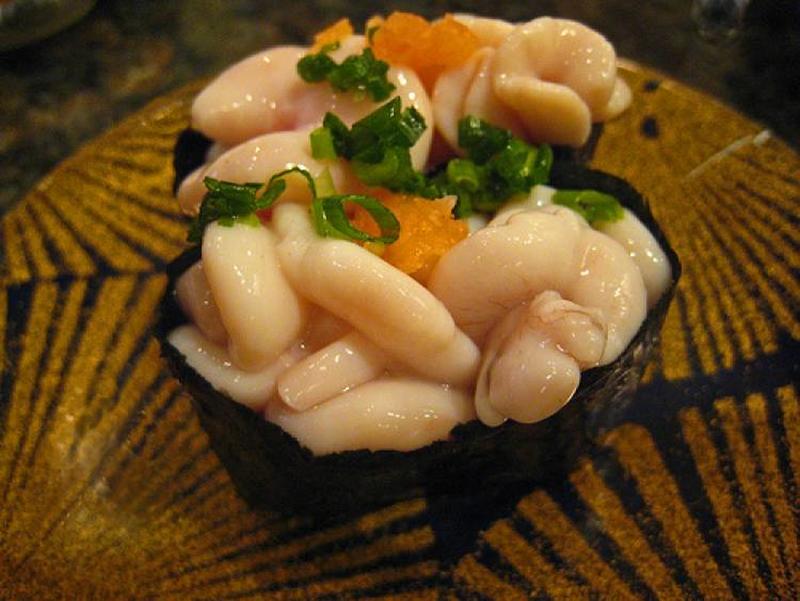
If not the most unappetizing food on this list, it certainly is the most controversial one. Besides female yaks, others might find this delicacy enjoyable and might tell their friends about it. It certainly has an impressive and poetic ring to it that might spark interest. If someone for some reason is into eating animal genitalia this would be the dish to try.
This is a "special Japanese dish" and shirako is another fancy name for an animal's reproductive organ. Shirako is essentially a cod's sperm sac. Apparently soft and creamy to taste you can have it served up steamed or deep fried. It is usually harvested from cod but can also be found from anglerfish, salmon, squid, and pufferfish. Shirako is mainly available in winter as this is when most types of the seminal fluid are in season

Although milt is a very common dish in Japan, many people consider it a rather acquired taste. It could be described as sweet and custardy; very subtle and delicate with a slight fishiness that makes it easily distinguishable from similar-looking dairy products. The texture of the sperm sac highly depends on the way it is served. While the raw Shirako is soft, creamy and slippery, it becomes slightly more firm and the individual sections become more defined when it is cooked.
So, they slit the struggling poor creature open right in front of you and place it's still beating heart into a shot glass of its own blood. You sink it while it still pumps away... enticed? There is a video on YouTube with Gordon Ramsey who tries cobra heart in Vietnam he feels quite disguised just before eating the heart. According to popular belief in Vietnam, it is supposed to give men virility and improve their love life. Care to try to see if it works?

It certainly is not for the faint of heart. You're supposed to feel it in your throat after you eat the heart. It is not the most pleasant feeling in the world. The Vietnamese consider eating snake to be a delicacy and a form of entertainment, rather than a necessary dietary requirement. However, this rule only applies inside restaurants. What the Vietnamese may do in their own backyards is entirely up to them - and sometimes it pays to be wild! However, consuming snake is risky to human health. All reptiles carry salmonella which can be contracted by eating raw snake.
Also known as 'maggot cheese', this traditional Sardinian dish is sheep's milk cheese famous for containing live insect larvae. Apparently, these wiggling little maggots are supposed to enhance the flavor but are prone to jump when they panic, so watch your eyes. Some people suffocate them or kill the beasties in the fridge before consumption, but others go for the live version. Sometimes they survive in the stomach and burrow into your intestines.
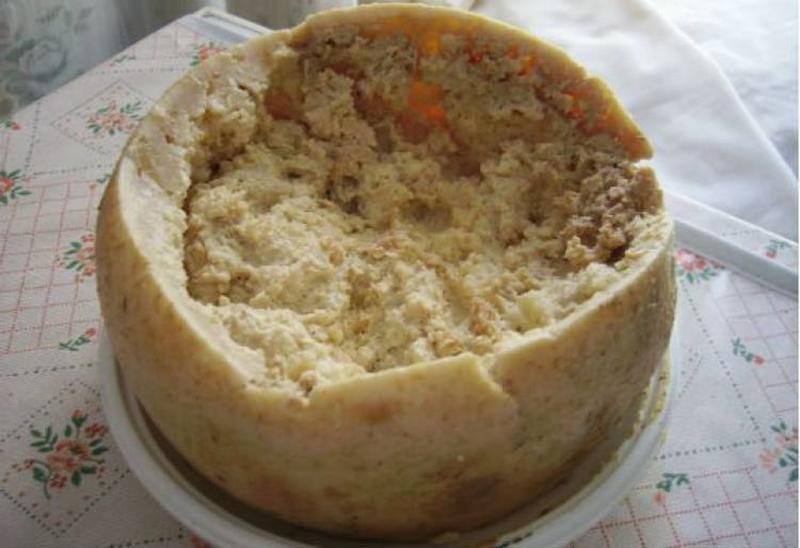
When the cheese has fermented enough, it is often cut into thin strips and spread on moistened Sardinian flatbread. Casu marzu is believed to be an aphrodisiac by Sardinians. Some who eat the cheese prefer not to ingest the maggots. Those who do wish to eat them place the cheese in a sealed paper bag. The maggots, starved for oxygen, writhe and jump in the bag, creating a "pitter-patter" sound. When the sounds subside, the maggots are dead and the cheese can be eaten.
Also called dead-and-alive fish, as its name implies it is a dish of extreme cruelty in Chinese cuisine, which consists of a deep-fried whole fish (usually carp) that remains alive after cooking. The the fish's body is cooked while its head is wrapped in a wet cloth to keep it breathing. The fish is then covered in sauce and served live on a plate.

This dish has attracted some controversies over the years. Taipei animal rights activists criticized a Taiwanese chef for serving a dish that included a deep-fried fish with its head still twitching. The chef served the carp with its body deep-fried and covered with sweet and sour sauce. The diners jabbed at the fish's eyes and mouth with their chopsticks in order to prompt the fish to move; the mouth and gills opened, and it was seen trying to breathe.
It is a variety of hoe (raw dish) made with long arm octopus, a small octopus species called nakji in Korean and is sometimes translated into "baby octopus" due to its relatively small size compared to the giant octopus. The octopuses are most commonly killed before being cut into small pieces and served with the nerve activity in the octopus' tentacles still makes the pieces move posthumously on the plate whilst serving.
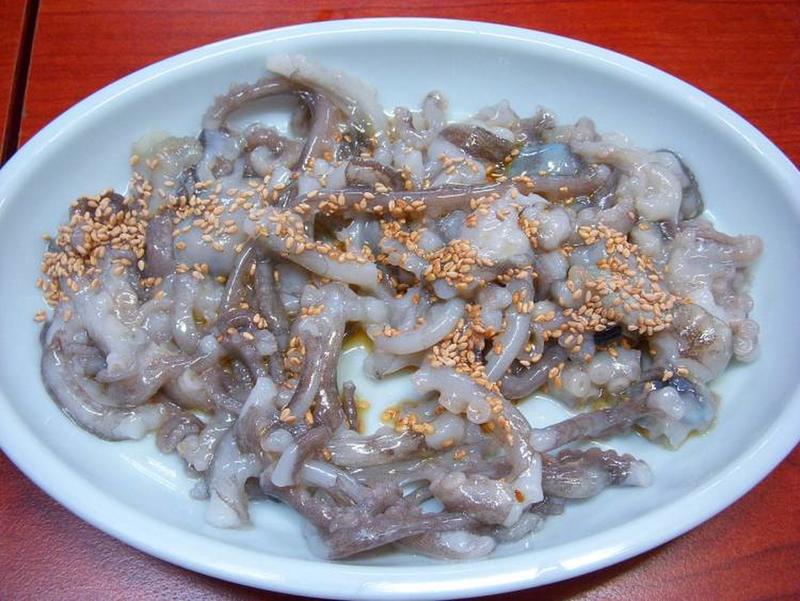
Because the suction cups on the arm pieces are still active when the dish is served, special care should be taken when eating sannakji. The active suction cups can cause swallowed pieces of the arm to stick to the mouth or throat. This can also present a choking hazard for some people, particularly if they are intoxicated. If you hold your life dear don't try eating moving octopus tentacles while drunk.
Drunken shrimp is a popular dish in parts of China, based on freshwater shrimp that are often eaten alive but immersed in ethanol to make consumption easier. Different parts of China have different recipes for the dish. For example, the shrimp are sometimes soaked in alcohol and then cooked in boiling water rather than being served still alive, and in other recipes, cooked shrimp are marinated in alcohol after they are boiled.

You shouldn't trust any food that moves while you eat it. It can cause health complications, consuming uncooked freshwater shrimps may be a serious health hazard due to the risk of paragonimiasis. Paragonimiasis is a food-borne parasitic infection caused by the lung fluke. It probably wouldn't be very wise to just jump into eating raw drunken shrimp, just stay with the sober and cooked ones.
Shark fin soup is a traditional soup or stewed dish found in Chinese cuisine and Vietnamese cuisine. The shark fins provide texture, while the taste comes from the other soup ingredients. It is commonly served on special occasions such as weddings and banquets, or as a luxury item in Chinese culture. The soup originated centuries ago during the Song dynasty, serving the imperial family and court members. During the Ming dynasty, the dish's popularity increased and by the time of the Qing dynasty was in high demand.

Shark fins are believed in Chinese culture to have properties boosting sexual potency, enhancing skin quality, increasing qi or energy, preventing heart disease, and lowering cholesterol. In traditional Chinese medicine, shark fins are believed to help in areas of rejuvenation, appetite enhancement, and blood nourishment and are beneficial to the kidneys, lungs, bones, and many other parts of the body.
Covering all manner of animals from the African plains, bushmeat includes flesh of wildlife like giraffe, lemurs and even apes. It's a strange food choice, considering how close an ape's DNA is to a human's, almost on the verge of cannibalism. Not only is bushmeat bad for conservation efforts, it also provides a route for a number of serious tropical diseases to spread to humans from their animal hosts. These include Ebola, HIV, smallpox, chicken pox, tuberculosis, measles, rubella, rabies just to name a few.

Bushmeat is used for sustenance in remote areas, while in major towns and cities in bushmeat eating societies it is treated as a delicacy.West Africans say they have been eating bush meat for longer than anyone can remember. And even where it is outlawed and frowned upon by conservationists who decry the killing of protected primates and other animals, you can still find it readily available in markets and on street corners.
We have all seen South Park's episode featuring whale hunting in Japan. Whale meat is the flesh of whales used for consumption by humans or other animals, and broadly includes other consumed parts as blubber, skin, and organs. It is prepared in various ways and has historically been eaten in many parts of the world, including across Western Europe and colonial America, and not necessarily restricted to coastal communities, since flesh and blubber can be salt-cured.
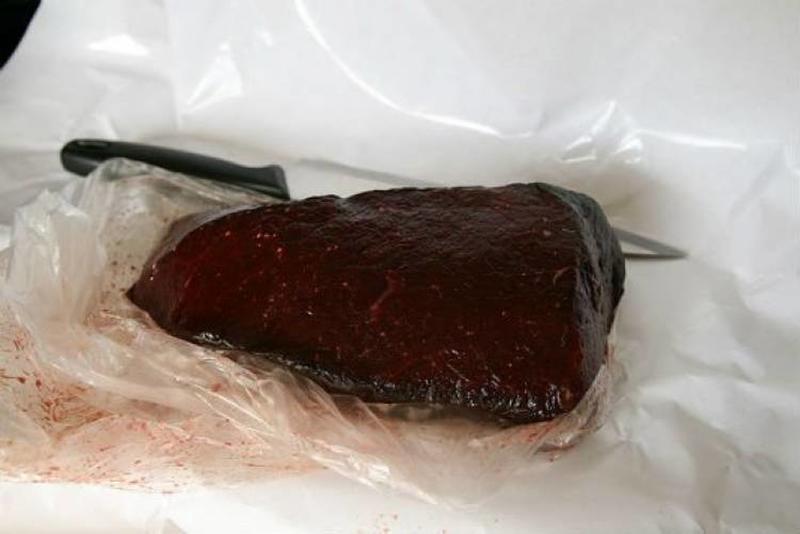
Despite being denounced by countless detractors on the grounds of wildlife conservation and animal rights, whale meat is still consumed in a large number of countries. The deaths of these endangered creatures are rarely quick and are usually bloody, and yet this still goes on around the world. The meat is said to contain high amounts of mercury and other toxins, which can cause organs to fail and a person to become mad. An occupational hazard for hatters in the 19th century, mercury poisoning inspired the Mad Hatter character in the Alice in Wonderland stories.
Dog meat is the flesh and other edible parts derived from dogs. Historically, human consumption of dog meat has been recorded in many parts of the world. In the 21st century, most dog meat is consumed in China, South Korea, and Vietnam, and it is still eaten or is legal to be eaten in other countries throughout the world. Some cultures view the consumption of dog meat as part of their traditional, ritualistic, or day-to-day cuisine, while other cultures consider consumption of dog meat a taboo, even where it had been consumed in the past.

It is strange for most people to imagine themselves eating dog meat because it is difficult to imagine that the animals which they had as pets can serve as a delicacy. Apparently, some cultures have no qualms about it. Furthermore, while not widely consumed in Korea these days, dog meat is big money in Vietnam, leading to a massive increase in the stealing of family pets.
You probably guessed what follows after eating dogs - that is cats. Cat meat is meat prepared from domestic cats for human consumption. Some countries eat cat meat regularly, whereas others have only consumed cat meat in desperation during wartime or poverty. Besides East Asia, cat meat is eaten in Africa, parts of Europe, in Australia by the aboriginal people even in South America (in those dire conditions).

It is a specialty in the southern provinces of China, namely Guangdong and Guangxi especially the older people. However, in northern China eating cat is considered unacceptable. With the increase of cats as pets in China, there is a growing opposition to the traditional use of cats as food. It seems that in the future people from China and other eastern countries will decrease their consumption of cat meat.